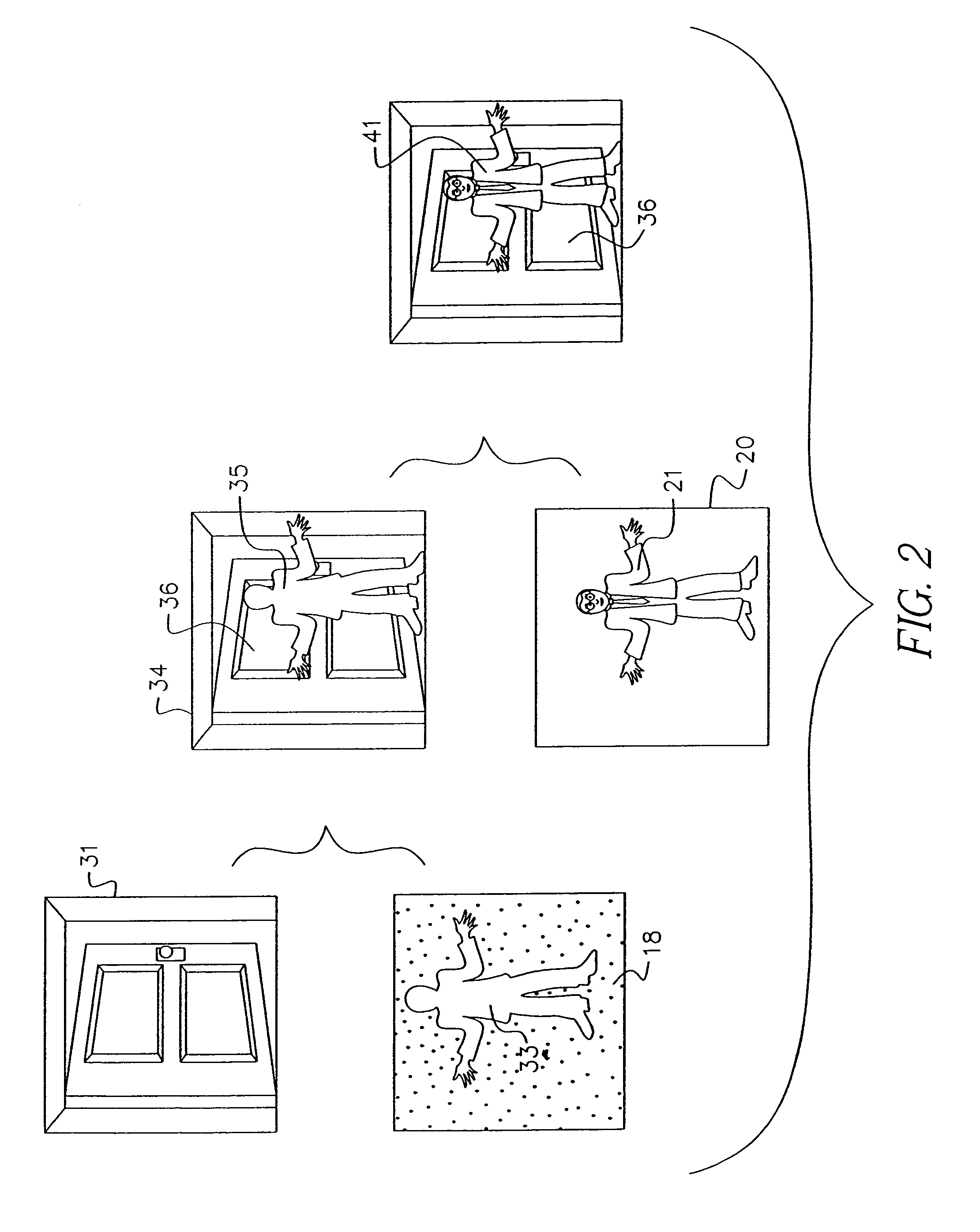Method for forming a depth image
a depth image and depth information technology, applied in the field of image data processing, can solve the problems of methods that do not produce meaningful 3d structures, use of this technology, and acquisition and processing of depth information, and achieve the effect of facilitating forming
- Summary
- Abstract
- Description
- Claims
- Application Information
AI Technical Summary
Problems solved by technology
Method used
Image
Examples
Embodiment Construction
[0034]The following is a detailed description of the preferred embodiments of the invention, reference being made to the drawings in which the same reference numerals identify the same elements of structure in each of the several figures.
[0035]Reference is made to commonly assigned U.S. Ser. No. 09 / 162,310, entitled “Method and Apparatus for Capturing Panoramic Images with Range Data”, filed Sep. 28, 1998 in the names of Lawrence A. Ray, Carl N. Schauffele and Brett VanSprewenburg, assigned to the assignee of this application, which issued on Feb. 8, 200 as U.S. Pat. No. 6,023,588
[0036]Reference is made to commonly assigned U.S. Ser. No. 09 / 383,573, entitled “Method for Creating an Environment Map Containing Information Extracted from Stereo Image Pairs”, filed on Sep. 28, 1998 in the names of Nathan P. Cahill and Shoupu Chen, assigned to the assignee of this application, which issued on Jan. 14, 2003 as U.S. Pat. No. 6,507,665.
[0037]In the following description, a preferred embodim...
PUM
| Property | Measurement | Unit |
|---|---|---|
| degrees of freedom | aaaaa | aaaaa |
| depth | aaaaa | aaaaa |
| relative depth | aaaaa | aaaaa |
Abstract
Description
Claims
Application Information
 Login to View More
Login to View More - R&D
- Intellectual Property
- Life Sciences
- Materials
- Tech Scout
- Unparalleled Data Quality
- Higher Quality Content
- 60% Fewer Hallucinations
Browse by: Latest US Patents, China's latest patents, Technical Efficacy Thesaurus, Application Domain, Technology Topic, Popular Technical Reports.
© 2025 PatSnap. All rights reserved.Legal|Privacy policy|Modern Slavery Act Transparency Statement|Sitemap|About US| Contact US: help@patsnap.com



